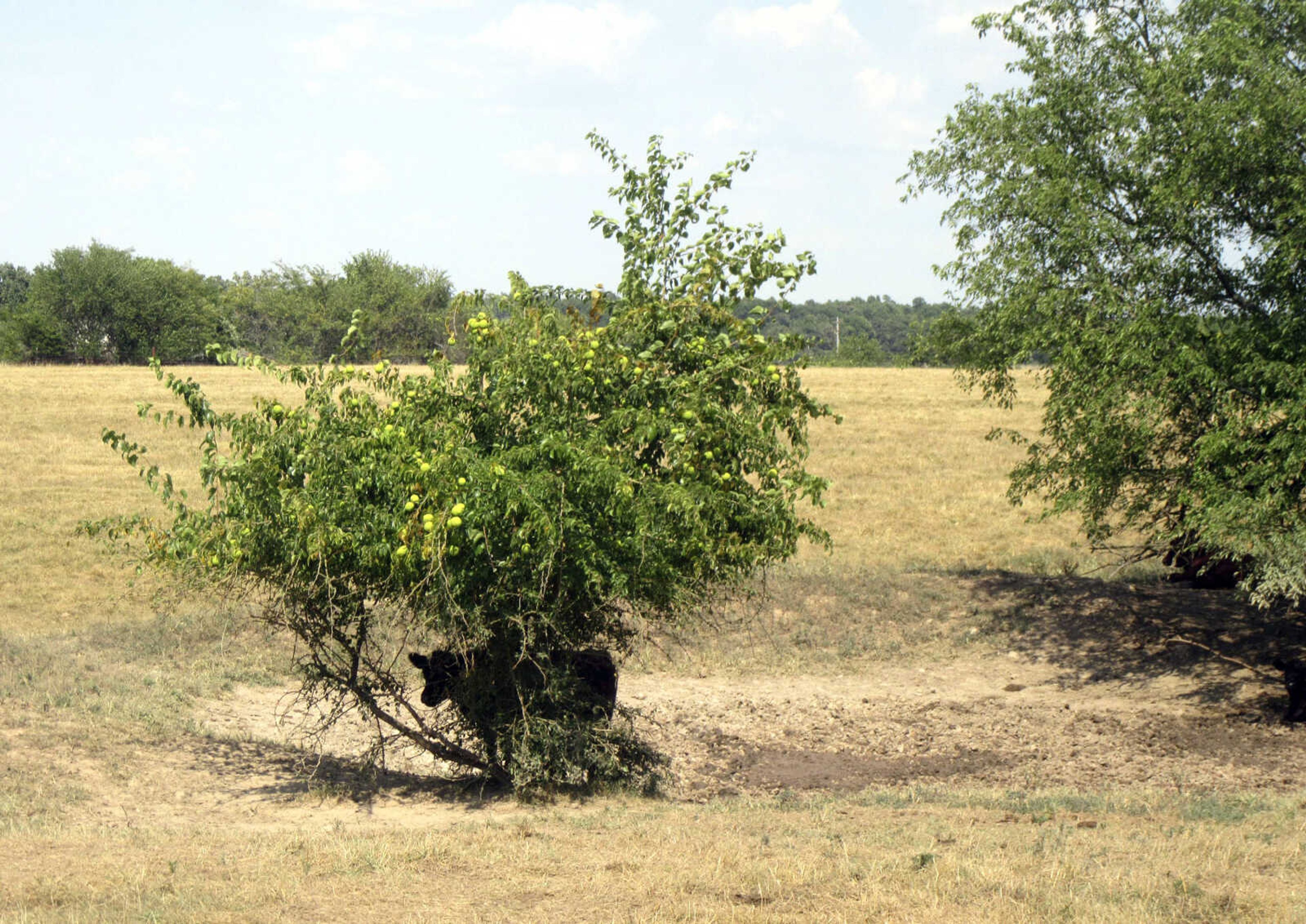Missouri opens hay, water programs for farmers amid drought
JEFFERSON CITY, Mo. -- Missouri farmers suffering from intense droughts across the state will be able to hay and pump water from some state land through new relief programs announced Monday by Gov. Mike Parson. Farmers will have access to water at 28 conservation areas and five state parks in northern and mid-Missouri, where the drought is hitting the hardest. The state also opened a lottery that will allow 16 farmers to hay on nearly 900 acres of Missouri State Parks land...
JEFFERSON CITY, Mo. -- Missouri farmers suffering from intense droughts across the state will be able to hay and pump water from some state land through new relief programs announced Monday by Gov. Mike Parson.
Farmers will have access to water at 28 conservation areas and five state parks in northern and mid-Missouri, where the drought is hitting the hardest. The state also opened a lottery that will allow 16 farmers to hay on nearly 900 acres of Missouri State Parks land.
The programs are aimed at helping farmers get by in face of below-average rainfall in the state since winter. The U.S. Drought Monitor map shows nearly all of Missouri is experiencing drought, with several counties in the northwestern part of the state facing "exceptional" conditions -- the most dire classification assigned by the monitor.
Cape Girardeau, Bollinger and Scott counties, parts of Perry and Stoddard counties, along with Union and Alexander counties in Illinois, are designated as "abnormally dry."
Parson, a rancher, said he fed his cattle hay this month for the first time in his life because of dry conditions.
"Anytime you're feeding hay in the State of Missouri in August, I guarantee that is not a good sign for any farmers in this state," Parson told reporters gathered in his Capitol office.
The southwestern U.S. is also experiencing drought. New Mexico's governor issued a drought declaration in July, groundwater levels have dropped across much of Arizona as crops are being irrigated, the price of hay doubled in southwest Colorado as fires burned in other parts of the state, and several Utah counties have drought declarations in place after having the warmest and least snowy winter since the 1800s.
Missouri is faring the worst of Midwestern states, although parts of Kansas are extremely dry.
Kansas Gov. Jeff Colyer declared a drought emergency in March, and Kansas Department of Agriculture spokeswoman Heather Lansdowne said that triggered a suspension of motor carrier rules and regulations to ease the path for farmers to transport hay. Kansas farmers also can access water from some state fishing lakes and federal reservoirs, and Lansdowne said some federally protected acreage is open to haying and grazing.
Missouri farmers are under heavy pressure because of the extent of the drought -- Parson said 86 counties are currently on drought alert -- and because they compete with farmers in neighboring Illinois, Nebraska and the northern half of Iowa, where it's now drought-free.
The U.S. Department of Agriculture lists 44 percent of Missouri's corn crop as poor or very poor, according to a USDA progress report released Monday. Only about 28 percent was listed as good or excellent, compared to 61 percent rated good or excellent at the same time last year.
The drought has also hurt pastures, with more than 70 percent in poor or very poor conditions, according to the USDA report. Last year, only 8 percent of pastures were reported to be in poor or very poor condition. Many pastures haven�t been able to support grazing cattle, prompting farmers to feed cattle with hay that might normally be saved for winter.
Under the new Missouri initiatives, up to 5,000 gallons of water can be pumped from specified sites daily per farm. Farmers can apply for the hay lottery through Saturday. One farmer from each location will be issued a permit that will allow haying on state grasslands from Aug. 27 through Nov. 27.
Connect with the Southeast Missourian Newsroom:
For corrections to this story or other insights for the editor, click here. To submit a letter to the editor, click here. To learn about the Southeast Missourian’s AI Policy, click here.









